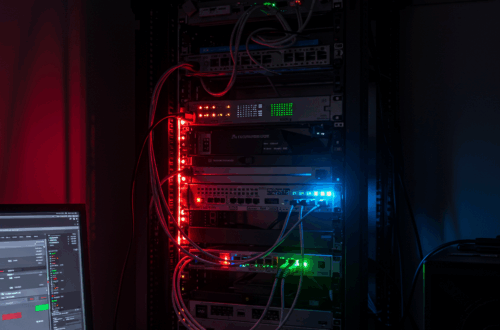Taming Your Self-Hosted Jungle with Zabbix: A Practical Guide
Running a self-hosted environment can feel like navigating a dense jungle. So many moving parts, so much to keep an eye on. How do you ensure everything’s running smoothly? One popular solution is Zabbix, an open-source monitoring tool. This post explores how to use Zabbix to bring order to your self-hosted chaos.
Why Zabbix?
Zabbix offers a robust and flexible platform for monitoring everything from server health to application performance. It’s free, highly customizable, and can handle complex environments. While setting it up might seem daunting at first, the payoff in terms of peace of mind is worth the effort.
Architecting Your Zabbix Deployment
Before diving in, let’s plan. A typical Zabbix setup involves a central server and agents installed on the machines you want to monitor. The server collects data from the agents and displays it in a user-friendly web interface.
- Zabbix Server: This is the brains of the operation. It stores configuration, collects data, and triggers alerts.
- Zabbix Agent: These lightweight agents run on your monitored devices, gathering data and sending it back to the server.
- Database: Zabbix uses a database (like MySQL, PostgreSQL, or Oracle) to store its data.
Setting Up Your Zabbix Server
First, you’ll need to install the Zabbix server. Specific instructions vary depending on your operating system, but the official Zabbix documentation provides detailed guides. This usually involves installing the server software, setting up the database, and configuring the web frontend.
Deploying Zabbix Agents
Once the server is up and running, install Zabbix agents on your devices. Again, refer to the official documentation for OS-specific instructions. During agent installation, you’ll link it to your Zabbix server so they can communicate.
Configuring Your Monitoring
Now for the fun part: configuring what to monitor! Zabbix offers a vast array of monitoring options, from simple ping checks to complex performance metrics. You can create templates for common services (like web servers or databases) and apply them to multiple devices.
- Templates: These pre-configured monitoring setups save you time and ensure consistency.
- Items: These define the specific metrics you want to track (CPU usage, disk space, etc.).
- Triggers: These define thresholds for alerts. For example, you could configure a trigger to notify you if CPU usage exceeds 90%.
Visualizing and Analyzing Your Data
Zabbix’s web interface provides a powerful dashboard for visualizing your monitoring data. Graphs, charts, and maps give you a clear overview of your environment’s health. You can customize these dashboards to focus on the metrics that matter most to you.
Advanced Zabbix Techniques
As you get more comfortable with Zabbix, you can explore more advanced features like custom scripts, distributed monitoring, and integration with other tools.
Troubleshooting and Maintenance
Like any system, Zabbix occasionally requires troubleshooting. The Zabbix community and documentation are excellent resources for finding solutions to common issues.
Conclusion
Zabbix provides a comprehensive solution for monitoring your self-hosted environment. While the initial setup might require some effort, the ability to proactively identify and address potential issues makes it an invaluable tool. So, take control of your self-hosted jungle with Zabbix, and enjoy the peace of mind that comes with knowing your systems are running smoothly.






